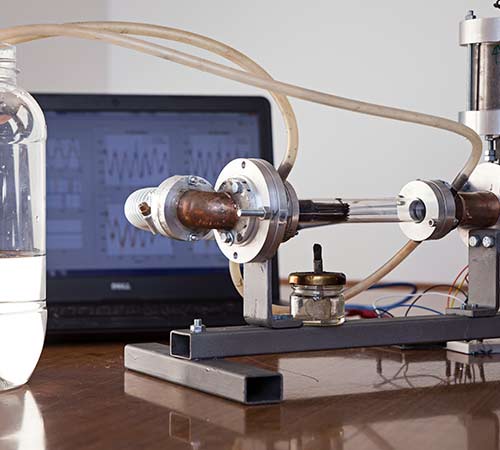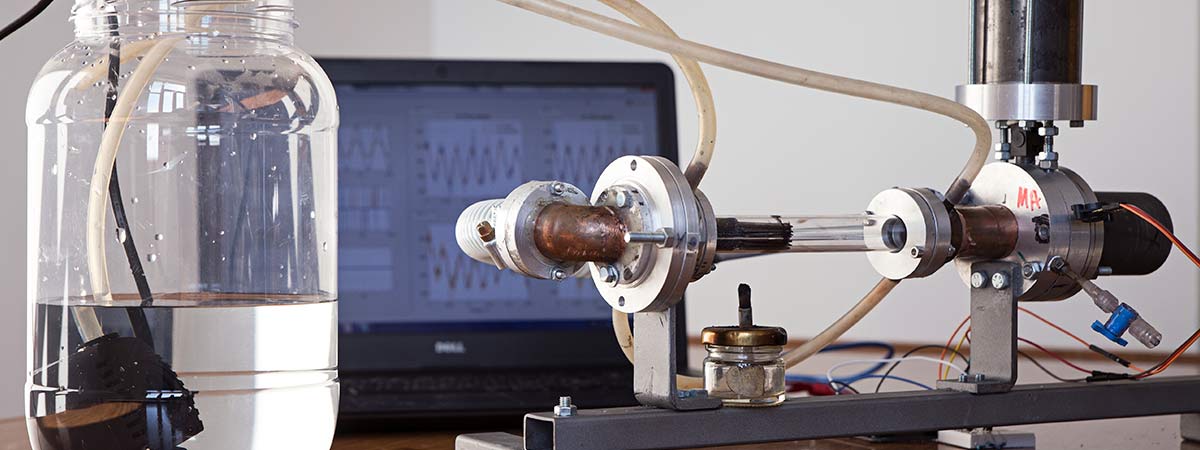+34 917800040
Admisión Grado y Postgrado
Undergraduate – Postgraduate Admissions
+34 914521100
Centralita
General Inquiries
Research Group on
Advanced Materials and Manufacturing (MOD3RN)


Research Group on Advanced Materials and Manufacturing Acronym: MOD3RN
Our multidisciplinary research group focuses on the development, implementation, and manufacturing of materials that merge morphology with diverse mechanical and functional properties, intending their application across various industries. Operating across the spectrum from TRL1 to TRL4, our research advances to higher levels only through collaborative efforts with industry partners.
Research Lines
The current lines of research are:
- Development of multiferroic materials in the form of sheets using sustainable methods for electronic devices.
- Development of perovskite structure materials with “colossal magnetoresistance” properties tailored for sensor applications.
- Creation of ceramic magnets to replace rare-earth magnets, aiming to reduce geopolitical dependencies and cost.
- Exploration of energy systems leveraging the Marangoni effect in fluids.
- Advancements in lightweight magnesium alloys, enhancing mechanical properties for aerospace applications.
- Metal 3D printing: Alloy development, process characterization, and variable analysis for part optimization.
- Optimization in design, topological and trajectory (‘graphological’) aspects for industrial 3D printing.
- Research on nanometric fractions of plastics to study their biological impact on cells.
- Development of comprehensive finite element models, integral for all research areas, converging material and manufacturing advancements towards objectives.
Featured Projects
Tecnologías de aporte de material digitalizadas para la fabricación y reparación automatizada de piezas de alto valor añadido (ARC1-PREDOC-21)
- File No.: -
- Funding entity: ArcelorMittal Innovación, Investigación e Inversión, S.L.
- Execution period: 2021-2025
Fabricación Aditiva y Machine Learning (Contrato Programa Doctorado de Investigación) (ARC2-PREDOC-22)
- File No.: -
- Funding entity: ArcelorMittal Innovación, Investigación e Inversión, S.L.
- Execution period: 2021-2025
Fabricación Aditiva y Machine Learning (Contrato Programa Doctorado de Investigación) (ARC3-PREDOC-22)
- File No.: -
- Funding entity: ArcelorMittal Innovación, Investigación e Inversión, S.L.
- Execution period: 2021-2025
Análisis granulométricos y de composición (EDX-SEM) de diferentes polvos metalúrgicos (GRINDING 2024).
- File No.: -
- Funding entity: ABRASIVOS GRINDING S.A
- Execution period: 2024-2025
Tecnologías de aporte de material digitalizadas para la fabricación y reparación automatizada de piezas de alto valor añadido (TECMADIVA).
- File No.: MIG-20211060
- Funding entity: CDTI Centro para el Desarrollo Tecnológico Industrial
- Execution period: 2024-2025

Responsible PR
PhD. Rafael Barea del Cerro rbarea@nebrija.es ORCID
PhD. Carlos Gumiel Vindel
Researcher
cgumiel@nebrija.es
ORCID
External Researcher
Omar Diaz Luque
Doctoral student
ORCID
Adrián González Martín
Doctoral student
agonzalezma@nebrija.es
ORCID
Jesús García Moreno Caraballo
Doctoral student
PhD. Daniel Gomez Lendinez
Researcher
dgomezle@nebrija.es
ORCID
PhD. Jesus C Guzman Minguez
Researcher
jguzman@nebrija.es
ORCID
PhD. Carolina Mendoza Parra
Researcher
cmendozap@nebrija.es
ORCID
PhD. Zhihui Meng
Researcher
zmeng2@nebrija.es
PhD. M Aranzazu Garitagoitia Cid
Researcher
mgaritagoitia@nebrija.es
Alia Baroudi Guijarro
Doctoral student
abaroudi@nebrija.es
PhD. Beatriz Achiaga Menor
Researcher
Jorge Jabón
Researcher
jjabon@nebrija.es
ORCID
